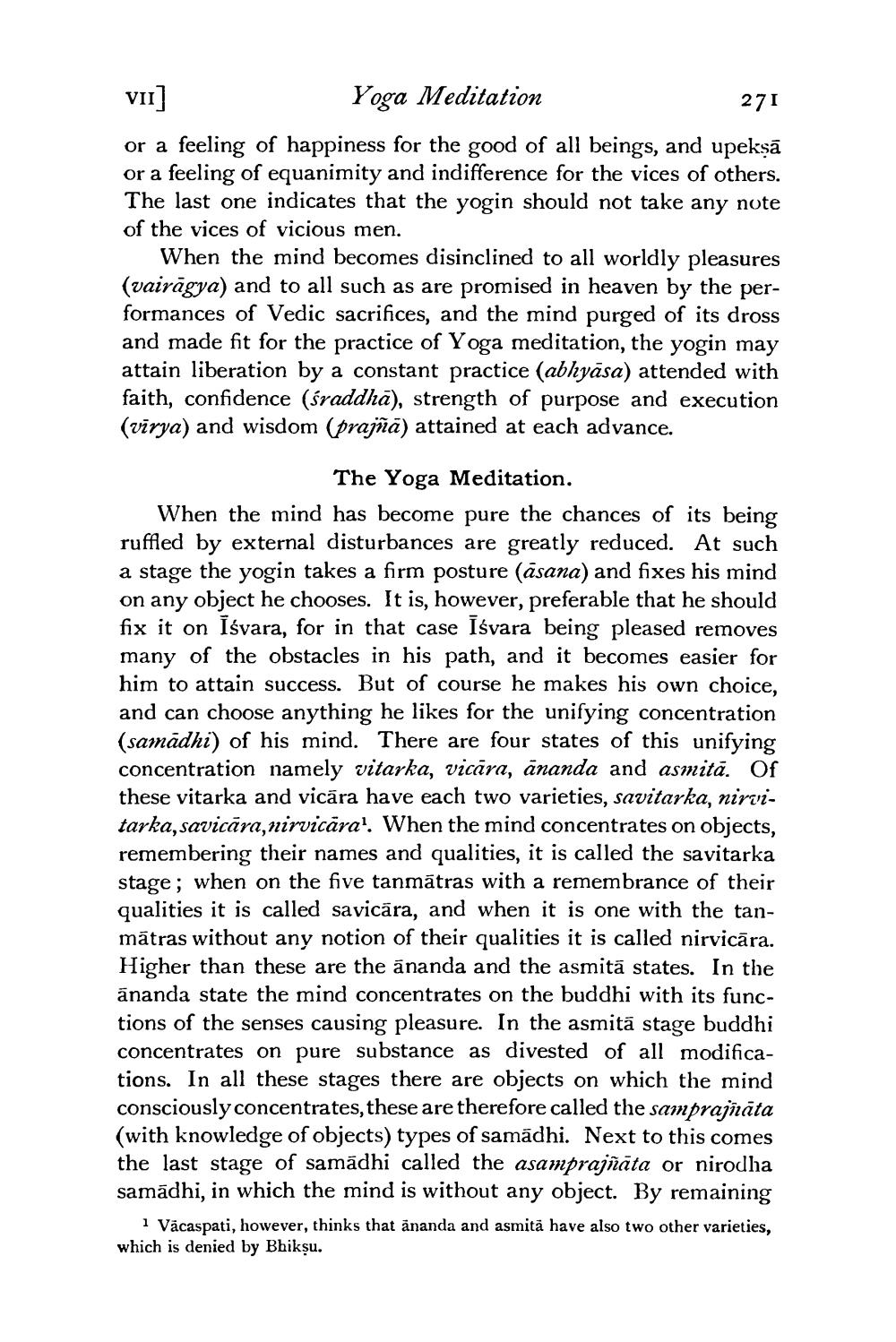________________
vii]
Yoga Meditation
271
or a feeling of happiness for the good of all beings, and upeksā or a feeling of equanimity and indifference for the vices of others. The last one indicates that the yogin should not take any note of the vices of vicious men.
When the mind becomes disinclined to all worldly pleasures (vairāgya) and to all such as are promised in heaven by the performances of Vedic sacrifices, and the mind purged of its dross and made fit for the practice of Yoga meditation, the yogin may attain liberation by a constant practice (abhyāsa) attended with faith, confidence (śraddhā), strength of purpose and execution (vīrya) and wisdom (prajñā) attained at each advance.
The Yoga Meditation. When the mind has become pure the chances of its being ruffled by external disturbances are greatly reduced. At such a stage the yogin takes a firm posture (asana) and fixes his mind on any object he chooses. It is, however, preferable that he should fix it on Išvara, for in that case Iśvara being pleased removes many of the obstacles in his path, and it becomes easier for him to attain success. But of course he makes his own choice, and can choose anything he likes for the unifying concentration (samadhi) of his mind. There are four states of this unifying concentration namely vitarka, vicāra, ananda and asmitā. Of these vitarka and vicāra have each two varieties, savitarka, nirvitarka, savicāra,nirvicārał. When the mind concentrates on objects, remembering their names and qualities, it is called the savitarka stage; when on the five tanmatras with a remembrance of their qualities it is called savicāra, and when it is one with the tanmātras without any notion of their qualities it is called nirvicāra. Higher than these are the ānanda and the asmitā states. In the ānanda state the mind concentrates on the buddhi with its functions of the senses causing pleasure. In the asmitā stage buddhi concentrates on pure substance as divested of all modifications. In all these stages there are objects on which the mind consciously concentrates, these are therefore called the samprajñāta (with knowledge of objects) types of samādhi. Next to this comes the last stage of samadhi called the asamprajñāta or nirodha samādhi, in which the mind is without any object. By remaining
1 Vacaspati, however, thinks that ananda and asmitā have also two other varieties, which is denied by Bhikṣu.




